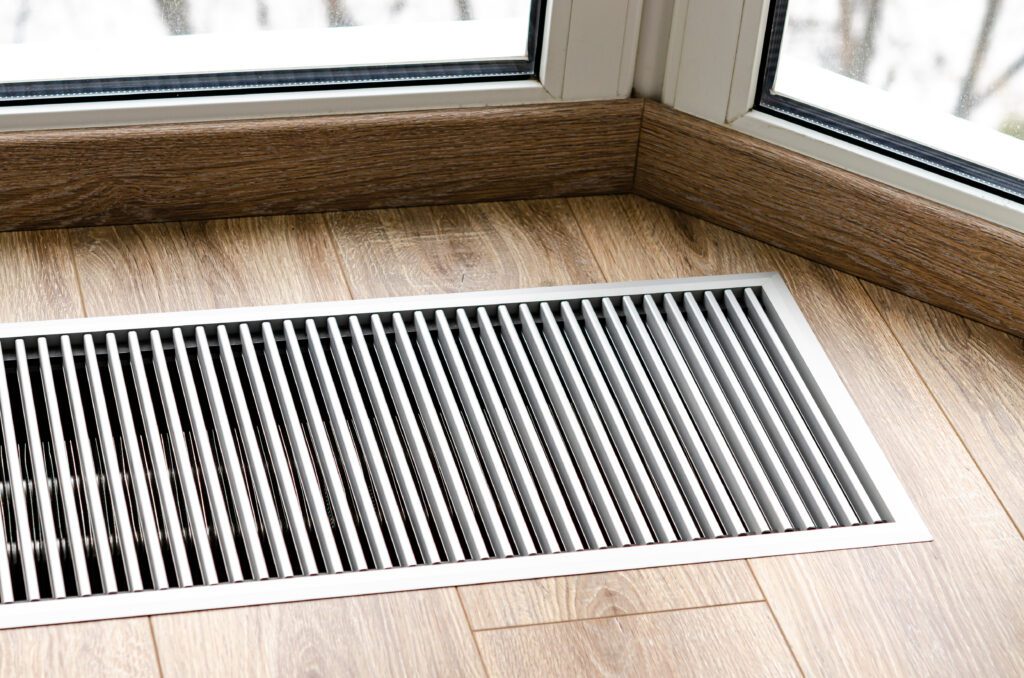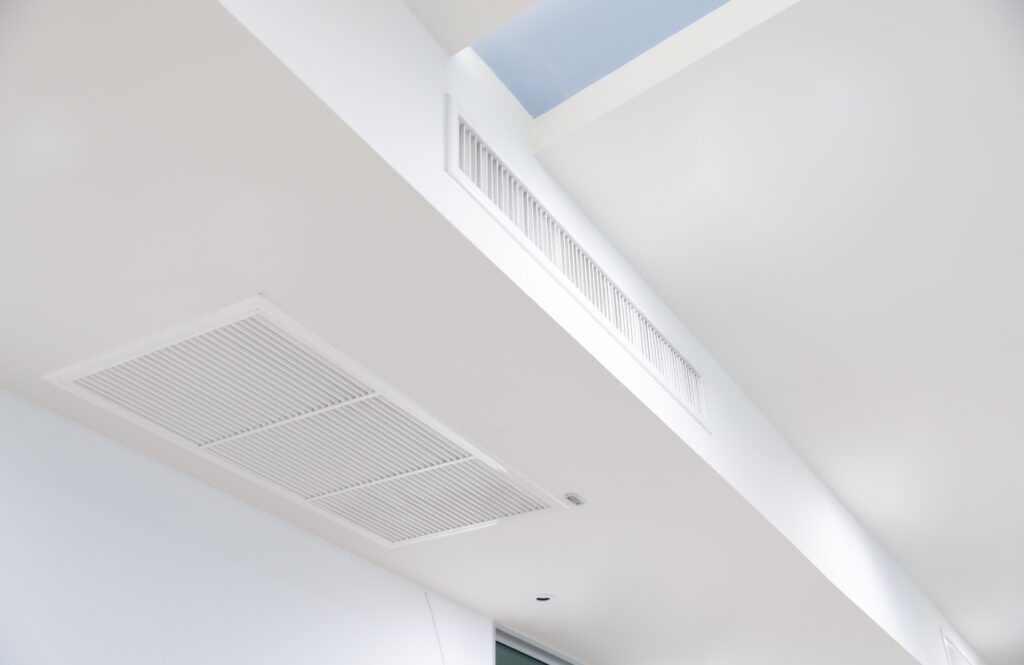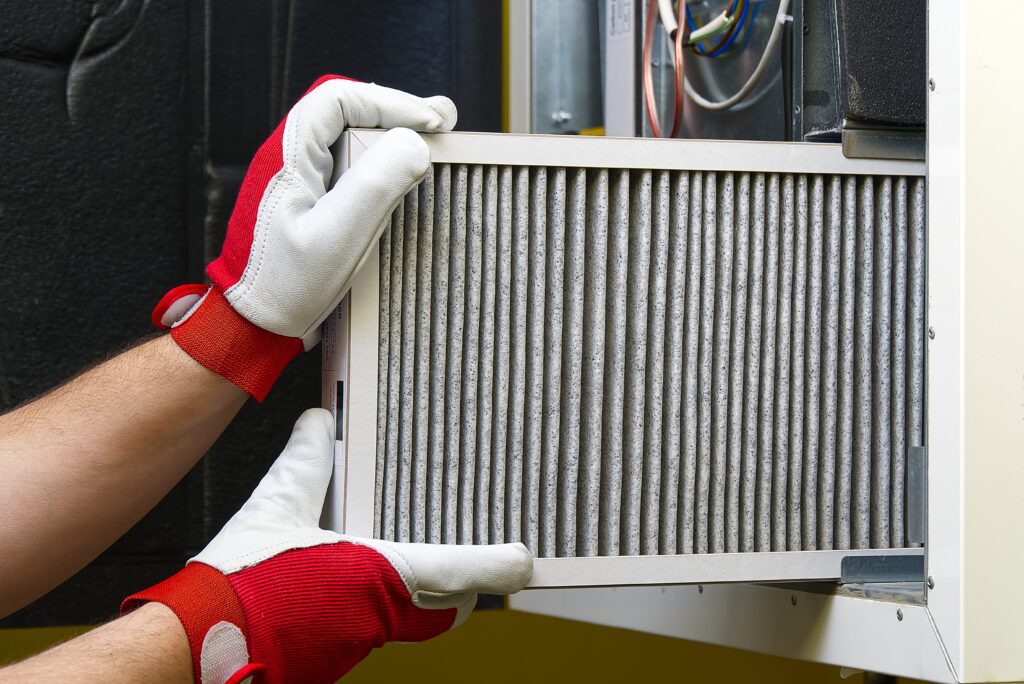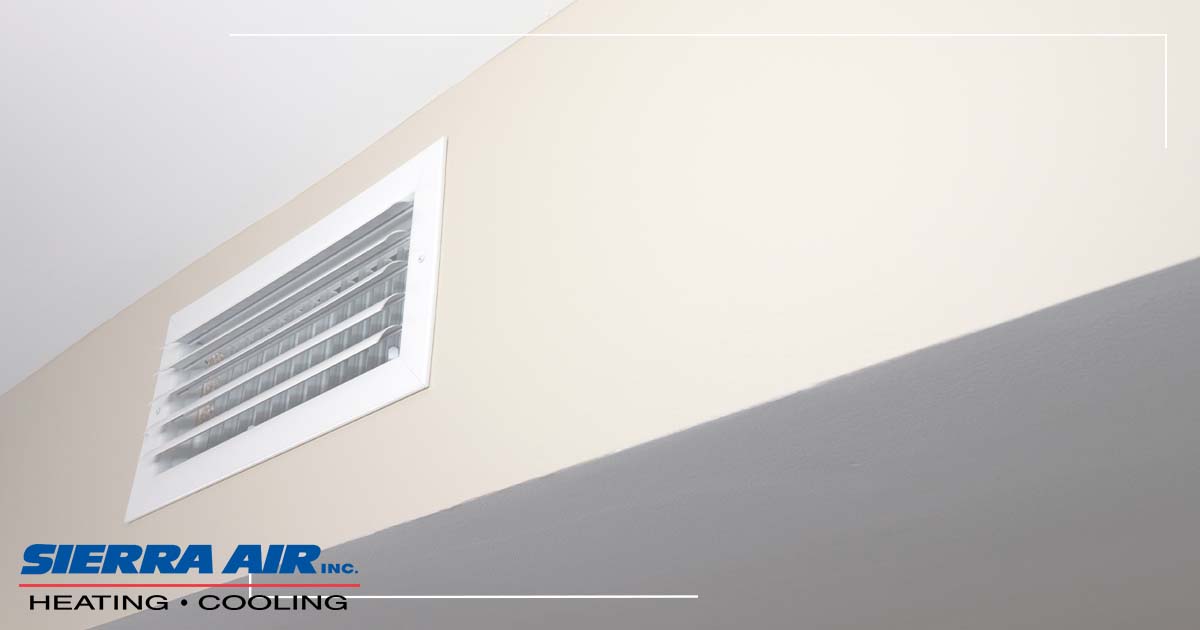If you’ve ever wondered if the air vents in your home need to be where they are, the likely answer is yes. Here we’ll discuss the pros and cons of having air vents high or low, and why the two types are needed.
Air Supply Register and Return Grill Basics
Each room should have a supply and return vent
Both vents are needed to create sufficient air circulation for ample heating and cooling. Without the supply and return vents, rooms develop uneven temperature and air pressure zones which affects your overall comfort and efficiency of the HVAC system.
How do supply and return vents work?
The supply air vent is responsible for supplying or bringing conditioned air from the HVAC unit into a room. The return vent pulls or sucks flat air back into the HVAC to be reconditioned, starting the air cycle again.
Do I have an air register or air grill?
You likely have both covering the two types of vents. Air registers are found on the supply vent; they have a damper or moveable flaps to allow full or partial airflow. Air grills are on the return vent and get their name from the resemblance to cooking grill grates.
Floor Vent Pros
If you want or enjoy more heat than cooling, floor vents are naturally more efficient for heat since heat rises.
- Easy to maintain: Because of their accessibility, you can clean floor vents with a broom, vacuum, or wash rag, plus repair dings or mars without needing a ladder and spotter.
- Can blend into floor design: When properly recessed into the floor, these vents can blend in with the sight lines, especially for composite or hardwood floors.

Floor Vent Cons
- Aesthetics: Most floor vents are painted metal, which means they can chip and mar and stick out aesthetically. Plus, there aren’t many design options available to choose from.
- Noisy: The vents may rattle and otherwise make noise whenever the HVAC system starts up and begins blowing air into the ducts.
Ceiling Vent Pros
On the other hand, if you prefer or use more cooling because of the geographic climate, ceiling vents are more efficient at cooling than their floor counterparts.
- Blend into sight lines: Skilled installers can blend ceiling vents into the ceilings so that most people won’t notice they’re there unless someone is standing under the supply vent.
- Furniture placement: Furniture won’t impede the air flow from ceiling vents so you can position it wherever you want.

Ceiling Vent Cons
- HVAC unit in unconditioned space: With ceiling vents, the HVAC unit is usually installed in the attic which is often subjected to extreme temperatures. These temperature swings can cause undue wear and tear on the unit.
- Needs powerful blower: For heat to reach the living area from ceiling vents, the HVAC unit needs to have a powerful blower to counter heat’s natural ability to rise.
Does it help to close vents in unused rooms?
No. Each HVAC system is designed to heat and cool a particular square footage and delivers a set volume of conditioned air to meet the requirements. When you close these vents, the HVAC continues to deliver the set amount. This causes the air pressure inside the ductwork to build, possibly causing the ducts to warp or leak which reduces the efficiency and comfort. And, without air going into the return vent, the HVAC works harder than necessary to pull flat air back in, which causes wear and tear.
It all depends on your personal needs
While you can organize the air vents based on the geographic climate, or the most efficient suggestion of the time, it all comes down to your personal needs and desires. Heating and cooling a home varies widely but you can find what works for you by working with an HVAC professional.
Improve Your Indoor Comfort with These Tips
Don’t block vents
Try to keep at least one foot of clearance around all sides of the supply and return vents, regardless of where they’re placed. Pay attention to how taller objects, such as bookcases, fit with the wall and some ceiling vents.
Replace the air filter
A clogged air filter reduces the amount of air flowing from the HVAC system to the vents. Remember to change the air every two to three months, or sooner if you live in a dusty environment.

Schedule regular HVAC maintenance
When your HVAC system is in good shape, it provides conditioned air through the vents on demand, no matter where the vents are located. Regular maintenance allows a trained technician to inspect the system from top to bottom and take a proactive approach to any potential issues rather than reacting and repairing.
No matter your personal preference for vent location, it’s always a good idea to keep up with regular HVAC maintenance so your home stays comfortable year-round.


